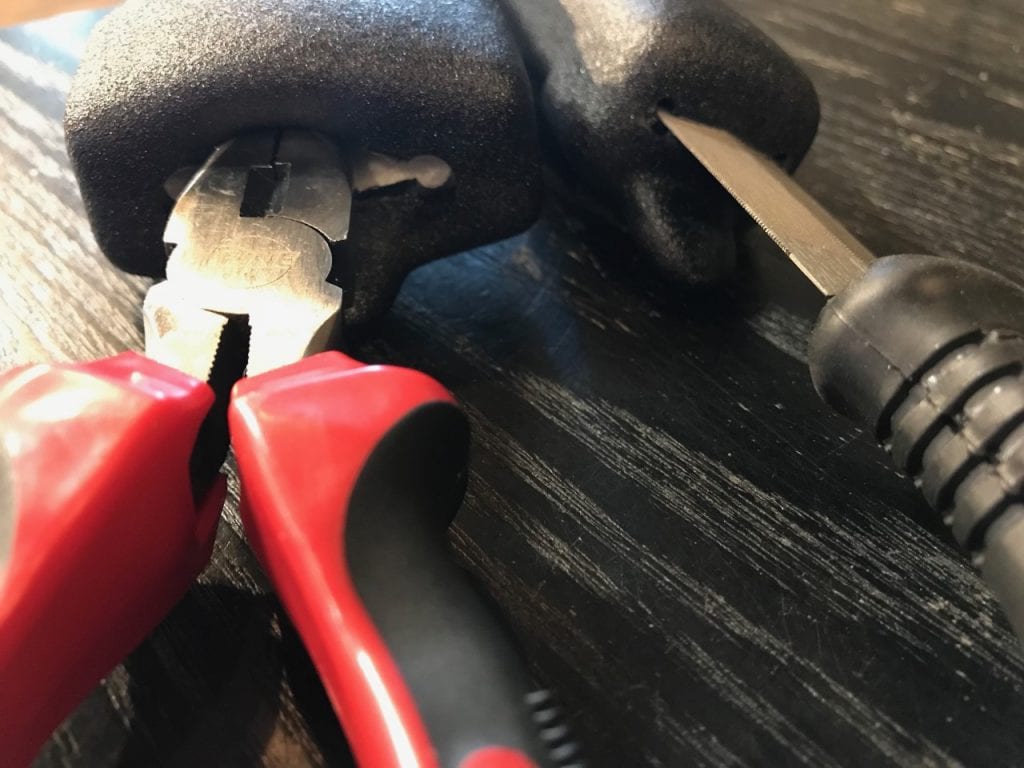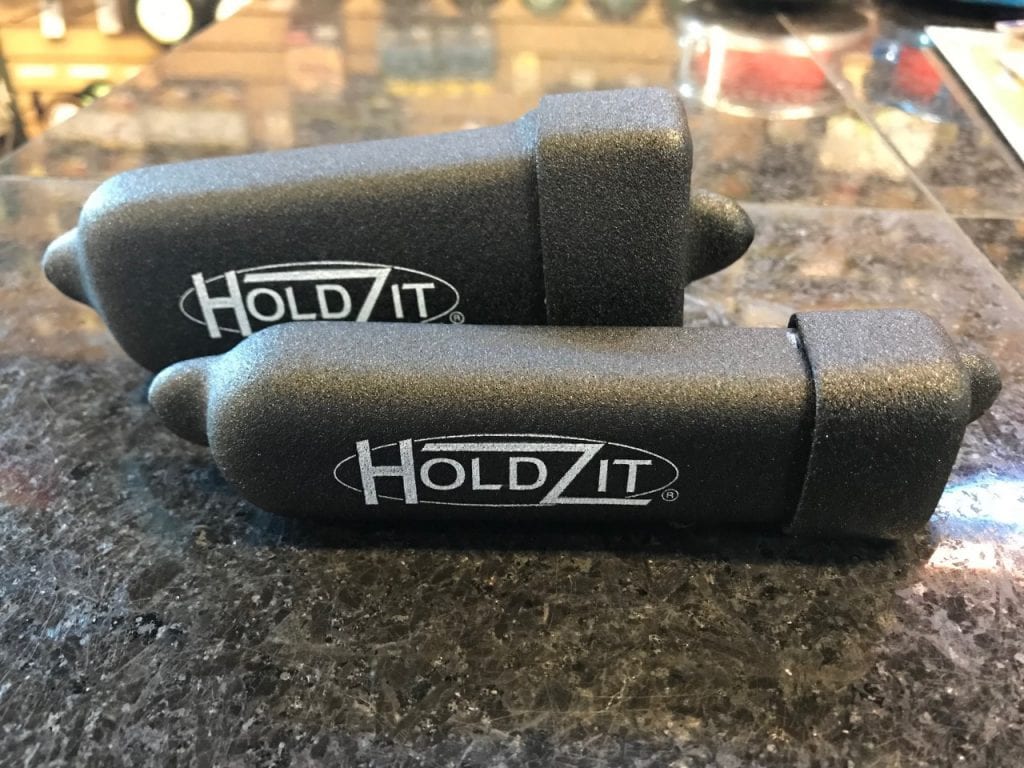OUTLOOK
Wow! Spring has sprung and she has done it in style! We will see more epic weather this weekend. The number of fishing opportunities this time of year is awesome. The temps will drop a little over the next couple of days but it will still be well above seasonal norms.
We have some cool stuff in the report this week. If you are going through the gear on your boat getting ready for the summer and are finding that your tools have rusted over the winter, we have a solution to make sure it never happens again. KMDA Tool Savers have been on our boats for a season now and we love them. Check out the product feature below and never struggle with rusted pliers or files again!
We have information on all our go-to fisheries like the Vedder, Stave, Harrison and Squamish but with the warm weather anglers are also hitting the less popular carp and bass fisheries. With this in mind Alex has a write up on Crank Baits. These are a great early season lure and if you are not using them in your arsenal take a look at what Alex has to say to get a foundation on what you need to know.
Jason and the boys have been down at the docks getting things ship shape for the season and we have more details in his saltwater section at the end of the report.
In the classroom we have Andre’s Fly Fishing For Searun Cutthroat Trout Class coming up. Join Andre for an informative evening in the classroom and a day on the water. April has a great lineup of courses from Introduction to Fly Tying and Fly Fishing to Introduction to Lake Fishing and Introduction to Chironomid Fishing which always sells out – check out all the details in our classes and courses section.
Last but not least our Annual Spring Super Sale is almost here! Get geared up for less on Saturday March 30 and Sunday March 31!
On to the report!
INDUSTRY EVENTS AND UPDATES
Pacific Angler Spring Super Sale
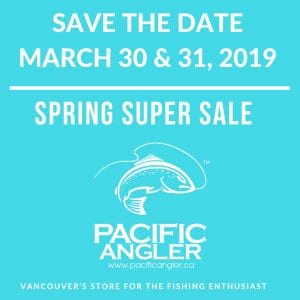
Keep an eye on this spot for more information about our upcoming 12th Annual Spring Super Sale. Get geared up for less March 30 and 31st.
CLASSES AND COURSES
Fly Fishing For Searun Cutthroat Trout In Rivers
This spring make sure to get out and take advantage of the world-class cutthroat fishing in the Lower Mainland. This cutthroat course is designed to educate you on the life cycle, location, seasonal feeding habits, and successful techniques and flies used to catch these elusive yet aggressive fish. This course consists of a 3hr evening seminar and a fully guided day on the water
Cost: $275.00+GST
Dates: Seminar Mar 26 Guided: Mar 30, Apr 6 or Apr 7 (custom trip dates available)
Seminar Time: 6:30pm – 9:30pm | Guided: Full Day

INTRODUCTION TO FLY TYING
Cost: $75.00
Dates: Apr 1, 8 and 15, 2019
Time: 6:30pm – 9:30pm

INTRODUCTION TO CHIRONOMID TECHNIQUES
Chironomids are the number one food source for trout in BC’s lakes; however, few anglers have taken the time to become true masters of this discipline. Those that do are often rewarded with the largest fish. Trevor is a former member of the Canadian Fly Fishing Team and an excellent chironomid angler. Dedication to his sport has helped Trevor become one of the top fly fishermen in the province as well as a fisheries biologist working for Hemmera. This course is comprised of one 3hr evening seminar. Content is for beginner to advanced.
Cost: $45.00
Dates: Apr 16, 2019
Time: 6:30pm – 9:30pm
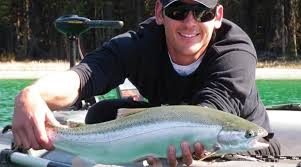
INTRODUCTION TO FLY FISHING
Cost: $125.00 + GST
Dates: Seminar Apr 24 Casting Apr 28, 2019
Seminar Time: 6:30pm – 9:30pm
Casting Time(s): 10am – 1pm or 2pm -5pm

INTRODUCTION TO FLY FISHING LAKES
This course will give you an in-depth look at the fundamentals of fly fishing lakes. We explore equipment, techniques, major insect hatches and ideal lakes to begin with. You will learn all you need to plan your next successful lake trip to one of BC’s 5,000 lakes! This course is comprised of one 3hr evening seminar.
Cost: $45.00 + GST
Dates: Apr 30, 2019
Time: 6:30pm – 9:30pm
FEATURE
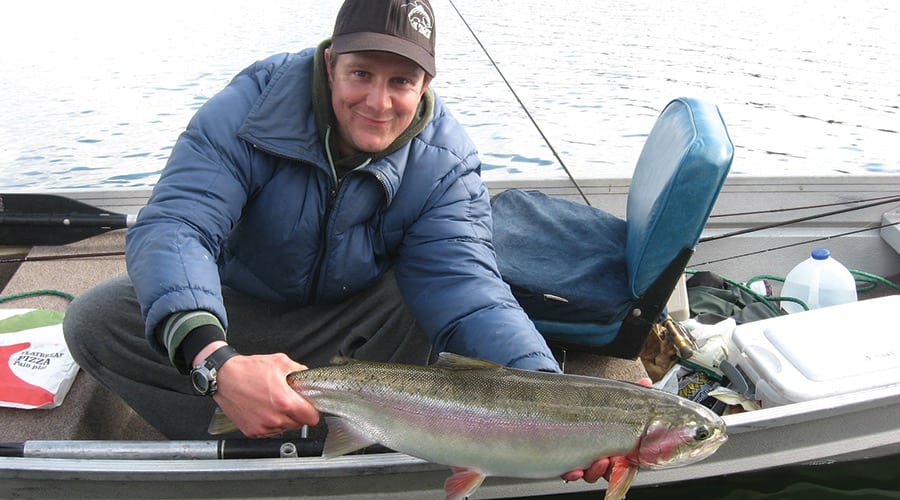
FEATURE
Solving the Rusty Plier Problem! – NEW Product KMDA Tool Saver
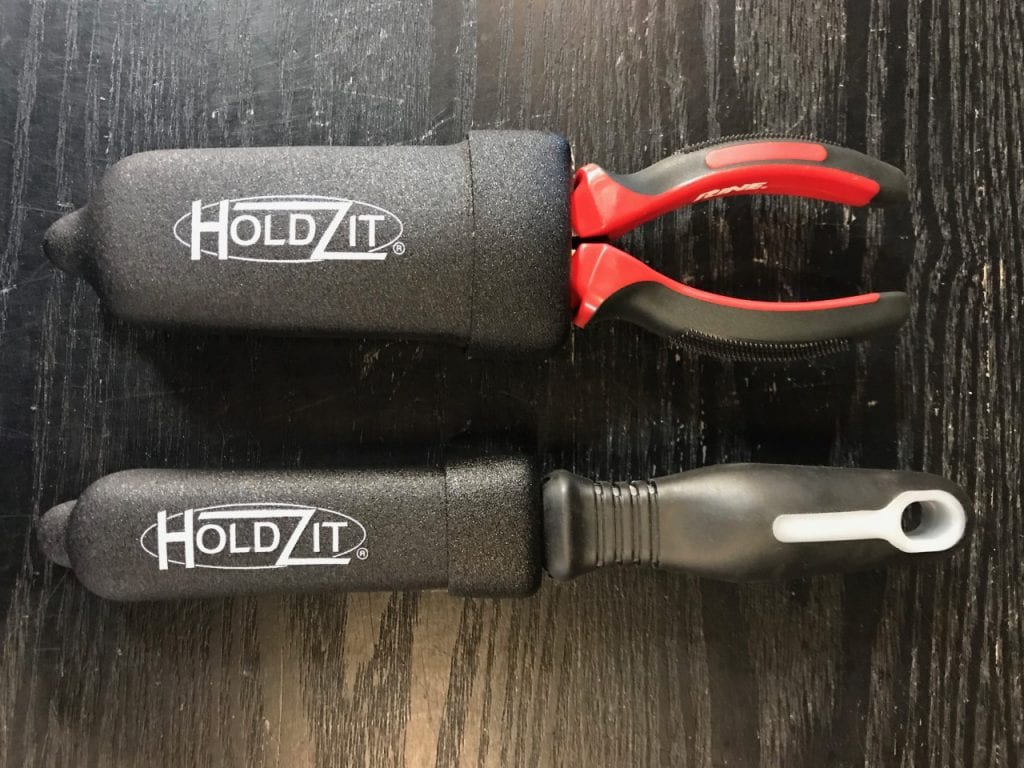
New for this upcoming season from Pacific Angler is the Tool Saver series from KMDA. These genius tool sheaths will help protect your tools while helping them stay rust-free.
By simply applying WD40 to your tools and the inside liner, every time you use your tools they get a healthy dose of rust fighting love. Great for pliers and files, these are sure to keep your expensive saltwater tools lasting longer, or your freshwater tools in pristine condition!
We have them on all our guide boats and our pliers and files are lasting exponentially longer!
Sold separately, you have the choice of a sheath for either your file or pliers- or pick up both! We loaded up and have great inventory on both in the shop now. Come down and we can show you how they work!
Jordan Simpson
Bass Fishing Feature – How to Fish Crank Baits in the Early Season

It is finally starting to feel like spring! The birds are chirping, the bugs are hatching, and the allergies are starting to plague me and some of our good customers. With consistently warmer days and lots of sunshine we can start thinking about the largemouth bass fishery which is a great alternative to the steelhead and trout fisheries going on right now. Largemouth bass will be coming out of their winter haunts and their increasing metabolism will drive them to search for food in order to bulk up for the upcoming spawn. This means they will be coming up into shallower water, making them more accessible to shore anglers. In saying that it is still very early in the season and it can be feast or famine; the timing is critical and you will need to factor in weather, water temperature, and location. The other important factor is your lure choice.
Your lure
choice makes a huge difference. Remember that the water is still cold so while
these bass may come up into shallow water on the warmer days, they are not
necessarily keen on chasing down fast moving targets. There are a few go-to
presentations for colder water bass but the one category I want to touch on for
this report are hard baits. I realize that “hard baits” is a very
generic term, but more specifically I want to look at crankbait and jerkbait
style hard baits.
Most of you have probably seen crankbaits and jerkbaits somewhere, be it at
your local fishing shop or in someone’s old tackle box. We on the West Coast of
British Columbia tend to overlook these lures, as they are not particularly
popular for our salmon, steelhead, or trout fisheries. Crankbaits and
jerkbaits for Bass resemble a small bait fish or crayfish and they either dive
or sink to a desired depth. They look similar but they have fundamental
differences. Jerkbaits tend to be elongated and usually suspend or have
some positive buoyancy when paused underwater while crankbaits have the more
classic, “bulbous” shape to them and fish at a certain depth. There
are a wide variety of these lures out there with different sizes, shapes, and
sink rates. They can be fished fast, slow, and through most types of water that
you will find Bass in and thus are extremely versatile all year round. At this
time of year I like to focus on natural looking forage and anything that will
dive or fish at depths between 1′-8′. The shallow runners are great early or
late in the day when the sun is not shining on the water or on cloudy days when
the Bass are more intent on coming onto shallow flats. The deeper sinking
lures work well on transition lines into deeper water where they may be staging
or holding tight to cover when it is cold or during the middle of the
day. In clearer water conditions I like to focus on more natural
looking patterns so anything that looks like a small Bass, Sunfish, or crayfish
are my favourites. The brighter patterns like firetiger work well in murky
water.
Because Bass
react sluggishly in cold water, crankbaits and jerkbaits are effective
as they can be fished extremely slowly. Crankbaits can be fished with a
steady and slow retrieve, just enough to keep it kicking and not unlike slow
rolling a spinnerbait (another great cold water lure by the way). Jerkbaits, on
the other hand, can take advantage of their darting action and suspending
nature to be kept in the strike zone longer with a twitch and pause technique.
Both techniques mimic either a sluggish or dying baitfish that has succumbed to
the temperature fluctuation. Again, the Bass will be lethargic so you want
to fish as slow as possible.
You don’t necessarily need any fancy gear to fish these lures but there are a
couple of things you will want to keep in mind. Since these lures typically
sport treble hooks out of the package, you will want to fish with a rod that
has a moderate to moderate-fast action. These helps absorb some shock when
setting hooks and fighting fish so the trebles do not pull out. I like either a
spinning or baitcasting outfit in the 6′ to 7′ range and a medium to
medium-light power. When it comes to choosing a line, there are a few options
to consider. Fishing straight mono is fine and the stretch that’s inherent with
mono helps with shock absorption and keeping hooks wedged into the fish. I like
12lb Trilene XL or Trilene Big Game. Fluorocarbon is another good choice and
while it doesn’t have much stretch it is great for clear water conditions (while
still using heavier pound test) and allows the crankbaits and jerkbaits
to dig a little deeper. The last option is to fish straight braid. I have
caught fish doing this and in a pinch it will work. However you will find that
it may be a deterring factor for clear water Bass and heavy braid tends to
alter the action of the crankbaits. It is also hard on the treble hooks as
there is no stretch at all and, if coupled with a faster action rod, will pull
trebles out of fish much more easily than mono. If you are set on using braid
try to keep it to very light braid in the 10-20lb range.
It is just the beginning of the Bass season and the water is still cold but this is a rewarding time to get out there. If you haven’t tried the crankbait or jerkbait style of fishing yet this is the season to try it out.
Come on in to the shop to get started.
Alex Au-Yeung
FRESHWATER FISHING REPORTS
Chilliwack/Vedder River Report
We are getting into the latter half of what we consider prime time on the Vedder River for steelhead. We saw a bump of water with this heat and it has added some much-needed colour to the river. Reports reflected this bump in water and we heard of a number of fish being taken. This river is still low but it is moving in the right direction.
The fry are also out in force and though the Vedder is not a prime cutthroat or bulltrout system, we have heard that steelhead anglers are hooking into a solid number. Steelhead anglers may not be interested in these smaller species but they are a ton of fun on light gear so don’t over look them.
This fry hatch does play a role in the steelheader’s strategy as well. Though steelhead do not usually actively feed when large numbers of fry are hatching this can change and they will actively target fry tumbling down the river. Spoons like the K4 and BC steel are a great option and Colorado blades are an easy switch if you are float fishing. We recommend fishing through every peace of water with classic steelhead gear (worms, roe or jigs) but before you move on make sure you have run something flashy through the pool. We have seen it where you fish one run for 30 mins then switch and within the first three casts with a spoon or blade you hook a fish.
Good Luck!
Squamish River Fishing Report
This past week has seen some steady warmer weather, which was long overdue. This in turn has started to colour up the water a little bit as well as given the system a much-needed bump in levels. Though conditions aren’t yet prime, anglers are managing to squeak out a few fish here and there.
The fry hatch is starting to pick up with quite a few being seen throughout the system. This will start to turn the char and trout fisheries on. Fry patterns such, as epoxy minnows are a staple for fly anglers, while small fluttering spoons are an essential for those using spin or drift gear.
Also remember that as daytime temperatures rise, so can water levels. Where you crossed earlier in the day may be too high or dangerous to cross later on. A good wading staff can help, but do keep an eye on changing conditions.
There have also been reports of a few fish with no eyes. They are called “Fsshh”.
Jordan Simpson
Stave River Fishing Report
We’ve had some really good reports coming out of the Stave. The fry hatch has kicked this system into full gear, with cutties being the main target. There have also been a handful of steelhead reports.
For you gear guys, an ultralight rod and small trout spoons is the way to go for the cutthroat. I tend to suggest Mini G’s and Dick Nite’s as they have produced fish consistently. For you fly guys, it’s all fry all the time. I’d go with a skinny coho fry on the end of a 9″ fluorocarbon leader, and your favourite trout rod.
Harrison River Fishing report
Well if you got out to the Harrison last week, you likely got into some epic cutty fishing. The hot temperatures kickstarted the fry hatch, and if you had the right pattern on and found the fish, it was tough to keep them off your line. With some rain in the upcoming forecast, it will change the system slightly, but not cause any earth shattering effects. Both the skinny and fat fry patterns have been producing fish.
Your tackle for this system should be dead simple. 9″ 5wt fly rod, 9″ 7lb fluoro leader, and as many fry patterns as your box can hold.
SALTWATER FISHING REPORTS
Well it is that time of year where there are a lot of options. I just spent a good 2 beers worth of time looking at past journal entries, emails, and pictures on my phone and comparing them to our trips this past week. There really is no “one spot” this time of year and you can literally hit fish at all the spots in Vancouver Harbour or Howe Sound, off South Bowen from Roger Curtis to Cowan, off the Hump or QA, or at Thrasher. That’s a lot of water to cover and it is all about being in the right place at the right time. The fish are really moving around a lot and the algae bloom has also started. This bloom seems to push the fish around a bit and the bait and the fish definitely come up off the bottom now, but not all of them, so depth consideration is now a variable (you aren’t necessarily fishing both rods close to the bottom). Confused? Well you should be as there is no secret formula for late March and early April, you just have to pick a spot and put your time in.

Here are a few tips for some of the areas that will be producing in the coming weeks in case you are a bit rusty on your offshore tacks. If you are going to venture out to the Hump, QA, or off South Bowen, try the 90-120 zone on your riggers. This is a good place to start and you can adjust lower or higher depending on what the fish are telling you and what you see on your sonar. Bright days they can be deeper and in dirty water and dark days they can be up as high as 45-60, especially first light. If you are fishing in the Harbor in 100-160 feet in the freighters or off the Bell, you should be getting good signals on your sonar (bait balls and fish arcs) and adjust accordingly. There have been fish caught right on the bottom this week as well as suspended. The same can be said for Howe Sound spots where we started seeing and catching suspended fish last weekend.

In terms of gear, the brighter colours are the way to go as the visibility has dropped. Try the following flashers; Salty Dawg, Chartreuse Phantom, BC, Green Onion Glow, STS, and Lemon Lime. Hootchies, bait and spoons are all working, but keep them bright. Think green, chartreuse, and glow. Some good colours are Irish Cream, Kitchen Sink, Homeland, Outfitter, and Trailhead when it comes to spoons. For bait teaser heads, try a Rhys Davis in glow with some green and chartreuse and you are good to go. For hootchies green and chartreuse glow splatter backs are where it’s.
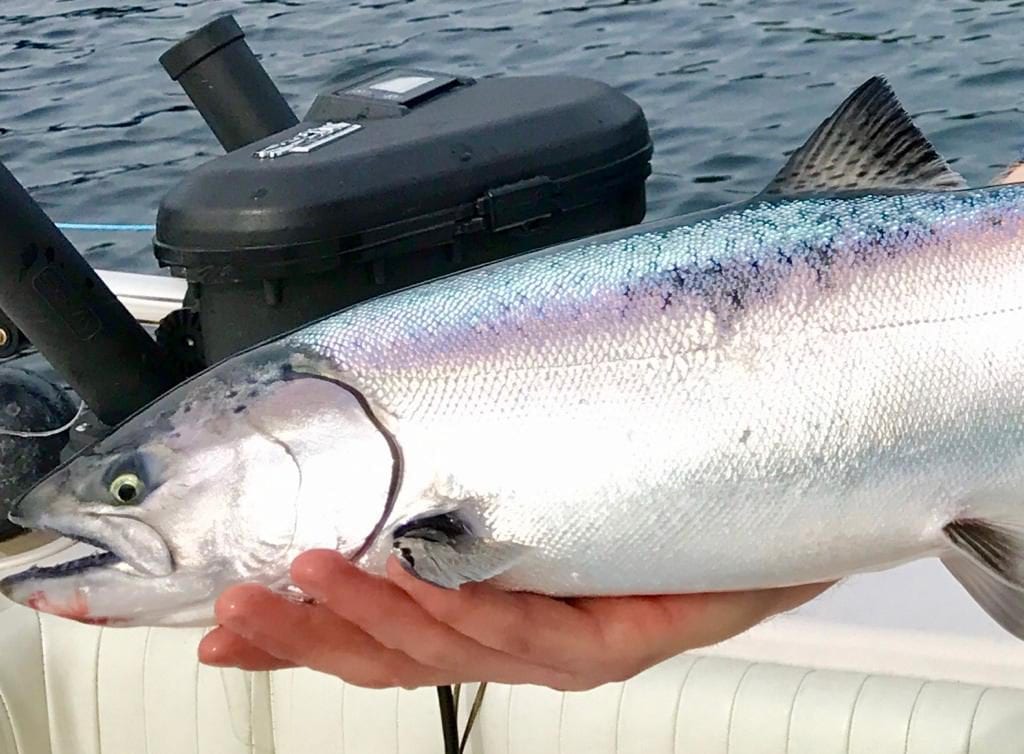
Crabbing has been decent and so has prawning, so add that to your to do list as well.
See you in the shop or on the water,
Jason Tonelli



